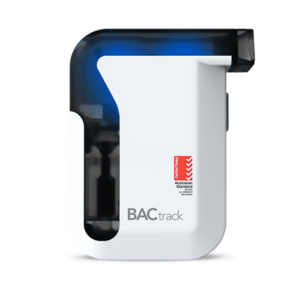PEth Blood Alcohol Test: The Need To Know
05 October, 2023

PEth blood alcohol test measures the amount of alcohol in a person’s blood over a long period. A nurse or lab tech cleans the person’s skin, usually on the arm, with a disinfectant. They then draw a small blood sample using a needle. This sample is sent to a lab where experts analyse it for Phosphatidylethanol (PEth), a marker for alcohol use. The test is highly accurate, offering reliable results even for low to moderate drinking levels.
Alcohol use disorder (AUD) is a condition where a person has difficulty controlling their consumption of alcohol. The person exhibits a strong desire to drink, an inability to limit alcohol intake, and neglects other important responsibilities. Medical professionals can quickly identify whether an individual has a drinking problem and provide early intervention by utilising the PEth test. This article will present the functions of the PEth test, including the sample collection procedure and its level of accuracy.
What is PEth Blood Alcohol Test?
PEth blood alcohol test is a highly reliable and accurate method to determine an individual’s alcohol use. This test measures the levels of PEth, a direct biomarker of alcohol consumption, in the blood. It can also provide valuable information about an individual’s drinking habits, including chronic, low, or moderate alcohol consumption.
Additionally, this test offers several benefits over traditional blood alcohol testing methods. The PEth test can detect the presence of ethanol for up to four weeks. This extended detection period allows for a more comprehensive understanding of an individual’s alcohol consumption patterns. Moreover, the PEth test can differentiate between occasional drinkers and heavy drinkers. This ability makes it especially useful for detecting potential alcohol misuse or alcohol use disorder.
Furthermore, the PEth test can be performed alongside other tests to gain a more accurate picture of alcohol use. These include ethyl glucuronide (EtG), urine, saliva, blood, breath, and hair testing. This comprehensive approach provides healthcare professionals with valuable insights. It helps them assess the frequency and level of alcohol consumption, as well as any previous alcohol issues.
Legal BAC Limit
- The legal Blood Alcohol Concentration (BAC) limit in Australia is set at 0.05% for most drivers.
- Exceeding the legal limit can result in various penalties. These include fines, an alcohol interlock program, license suspension, and even imprisonment.
- Learner, provisional, and probationary license holders, as well as drivers of taxis, buses, and trams, must have a BAC of zero.
- Police officers have the authority to request drivers to undergo breath, saliva, or blood testing to determine their BAC level.
- Drivers should be aware of their frequency of alcohol consumption and the legal limit to stay safe and follow the law.

Sample Collection Procedure of PEth Blood Alcohol Test
The sample collection procedure of a PEth blood alcohol test is simple and straightforward. Firstly, the collection officer extracts a few drops of blood samples from the individual. They do this using a needle to draw blood from a vein in the arm. Subsequently, the officer places the samples in a small vial or tube and sends them to the laboratory.
Secondly, the examiners test the sample for the presence of PEth in the laboratory. They use specialised techniques, such as liquid chromatography and mass spectrometry, to accurately detect and measure the PEth levels. This analysis helps determine the amount of alcohol that has been consumed over a specific period of time.
Thirdly, qualified professionals interpret the results of the PEth test after completing the laboratory analysis. The levels of PEth found in the human blood provide information about alcohol consumption in patients. Higher levels of PEth indicate a greater frequency and quantity of alcohol consumption. On the other hand, lower levels suggest moderate alcohol intake. These results assess alcohol use, detect chronic alcohol misuse, identify issues, and track treatment progress.
How to Prepare for a Test
To prepare for a PEth test, individuals should follow a few simple steps. For instance, they need to abstain from consuming any alcoholic beverages for a specific period before the test. They should refrain from alcohol consumption for at least two weeks prior to the test
In addition, people have to drink plenty of water in the days leading up to the test. Staying hydrated helps to flush out any remaining direct metabolite of alcohol from the body, ensuring a more accurate test result. It is also advisable to maintain a healthy lifestyle as this can support the body’s natural detoxification processes.

Accuracy of PEth Blood Alcohol Test
A PEth blood alcohol test is a highly accurate method for detecting alcohol usage. With a 99% sensitivity rate, this test outperforms older methods in detecting ethanol in the blood accurately. This high sensitivity means that the test can provide reliable results, even in cases where alcohol consumption may be relatively low.
Additionally, it offers a significant advantage due to its ability to discriminate between various levels of alcohol consumption. It also differs from traditional tests, which typically provide only a binary “positive” or “negative” result. Instead, the PEth test can measure the extent of alcohol consumption. This capability offers a more comprehensive insight into an individual’s alcohol intake.
Furthermore, the accuracy of this test makes it a valuable tool in assessing alcohol-related issues. It can specifically identify problems like alcohol misuse or heavy drinking patterns, providing crucial insights for appropriate interventions and support. By measuring the presence of direct alcohol biomarkers, the test can provide a clear picture of an individual’s alcohol use history. This information can be crucial in assessing the frequency and patterns of alcohol consumption.
Are there Risks of False Positives?
Several factors can contribute to false positive results in the PEth test. For instance, the window of detection. PEth, the direct marker for alcohol intake, can remain in the blood for an extended period of time. The test can show a positive result if done during this detection window, even without recent alcohol consumption.
Other factors, such as certain medications or substances containing ethyl alcohol, can also interfere with the accuracy of the test. Moreover, individuals with specific medical conditions may also be at an increased risk of false positives. Healthcare providers and legal professionals should consider additional evidence or retesting to ensure accurate results.
Conclusion
The PEth blood alcohol test is a reliable method to detect alcohol consumption through PEth biomarkers. This test distinguishes between occasional and heavy drinkers, helping identify alcohol misuse or disorder. It involves a simple blood draw for sample collection, enabling precise analysis using specialised techniques. Healthcare professionals use the results to assess alcohol intake levels, providing crucial insights for effective early intervention and treatment monitoring.
Furthermore, this test is highly accurate, detecting alcohol usage with a 99% sensitivity rate. The high sensitivity of the test ensures reliable results, even in cases of low alcohol consumption. However, there are risks of false positives due to factors like the detection window, certain medications, and specific medical conditions. Preparing for a PEth test involves abstaining from alcohol for two weeks, staying hydrated, and maintaining a healthy lifestyle. These steps help ensure accurate results and support natural detoxification processes.






























